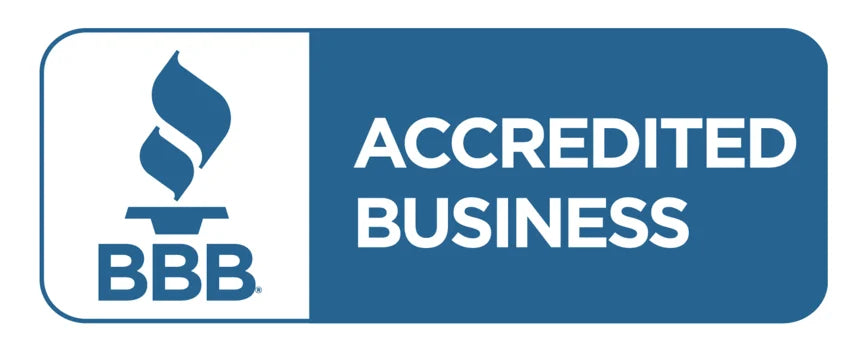According to the National Institute on Deafness and Other Communication Disorder, approximately 15% of American adults (37.5 million) aged 18 and over report some trouble hearing. Moreover, as per WHO, by 2050 nearly 2.5 billion people are projected to have some degree of hearing loss and at least 700 million will require hearing rehabilitation.
Purchasing hearing aids is a significant decision because they are a pricey semi-permanent component of your lifestyle, so you should take your time choosing one. However, a person's preferences for a hearing aid might not be as common as their preferences for a house or a vehicle.
That is why we are here to assist you in learning what to look for in a hearing aid. This hearing aid buying guide will help you thoroughly about what to consider when buying a hearing aid. Let us now take a look at the buying guide for hearing aids.
As much as we'd like to, we can't know you or your needs individually, so we can't, so in this hearing aid buying guide, we'll discuss the best practices when trying to get hearing aids. A test and discussion with a trained hearing practitioner are the best ways to buy hearing aid that is right for you.
Knowing about Hearing Aids
- There are no regenerating dead inner ear hair cells. However, by amplifying and rendering sounds easier to grasp, hearing aids may greatly enhance your capacity to hear.
- A receiver in a hearing aid sends the sound into the ear canal after being amplified and amplified by a microphone. With today's digital hearing aids, the sound is transmitted from microphones to a computer chip, which magnifies the necessary audio signals and changes the level as needed to help you hear better.
- A hearing specialist can fine-tune a digital hearing aid to match your unique hearing loss pattern and configure it to filter out wind and other background noise. The ability to take calls, stream audio, and even change the settings of your device using an app is becoming more and more common in devices that can wirelessly connect with your smartphone.
- The type and degree of your hearing loss, your lifestyle, and your manual dexterity all play a role in determining the best hearing aid for you. Even when their audiograms are nearly similar, an earpiece that one individual finds comfortable may not be suitable for another.
- The majority of hearing aids won't ever totally block out background noise such that you can just hear the person—or people—speaking. There are claims that although it will restore hearing in some people, it won't restore their ability to hear normally because of the way our ears receive sound.
- Additionally, there may be multiple variations of a certain model even within the same brand. Assessing hearing device models and brands is exceedingly difficult because of this diversity.
The Function of Hearing Aids
All hearing aids, regardless of style, are made up of the following four components:
- Microphone
This is what records ambient sounds.
- Chip and Amplifier for Computers/Laptops
It transforms the audio into digital signals, evaluates and intensifies the signals, and then transforms the signals back into sound waves. This device is also known as a processor.
- Speakers and receivers
This sends the processor's enhanced sound waves to the internal ear canal.
- Battery
Removable batteries last from 3 to 22 days based on use; rechargeable batteries are integrated into hearing aids and are intended to provide a complete day of performance after a fully charged battery.
Different Types of Hearing Aids
- Behind the ear (BTE) - open fit
- Behind the ear (BTE) - with ear mold
- Completely in the canal (CIC)
- In the canal (ITC); and
- In the ear (ITE)
- Behind the Ear (BTE) - Open Fit
Open fit hearing aids are small and largely invisible to onlookers since they are worn behind the ear. Most of the time, they have a small, compact outer shell that rests behind the ear and a very thin wire or tube that enters your ear canal. Your ear canal receives sound through a cable. A little silicone dome that is comfortable in the ear canal is located at the wire's tip. Because the dome is adequately ventilated, the "barrel" or "hollow" sound quality that certain other aid types produce is less noticeable. The venting prevents the ear from feeling congested. On the other hand, the open fit style's traits increase the likelihood of receiving input. Additionally, it allows lower-frequency sound impulses to escape through your ear canal, which could limit this type to a high-frequency hearing loss that is only fairly severe.
- Behind the Ear (BTE) - With Ear Mold
The BTE with ear mold shape does not have the dome inserted into the ear canal like the open-fit behind-the-ear hearing aid does. A custom-molded earpiece that fits within the canal is part of it. Often, the behind-the-ear enclosure is larger than the open fit variation. Nevertheless, they are getting smaller due to technological advancements. The most effective hearing aids are often BTEs, which are suitable for almost any age group and degree of hearing loss. This design is excellent for children since it allows for easy ear mold replacement as the child grows. This is a great option for practically everyone if the larger overall size is not a concern for you.
- Completely in the Canal (CIC)
The completely in the canal (CIC) approach can be an alternative to consider if one's goal is to be discrete. This specific device is specially constructed to fit deep inside the ear canal and is hence incredibly undetectable. Wind noise is one advantage the BTE has over this. It is typically shielded from wind noise by your ear because it is located deep inside of it. Additionally, using a cellphone with it is straightforward. Using a phone comes naturally and is pleasant.
Depending on how severe your hearing loss is, the small overall size might not be an option for you. Adults with mild to moderate hearing loss typically benefit the most from CIC devices. Because of the small overall size, holding the hearing aid and changing the batteries both require high fine motor skills. There are occasionally no volume controls or directional microphones, which can result in certain selection limitations. This is a great option if you're willing to forgo a few possibilities in favor of a more discreet, smaller help.
- In the Canal (ITC)
The in-canal hearing aid is a little larger than the CIC model and can include features that won't fit there. As a result, you might reap many of the same advantages. The majority of it will fit into the ear canal. Due to the small overall size, you might find some of the options difficult to manipulate. Manufacturers have developed remote controls for a few aids to address this issue. The ITC aids are appropriate for hearing deficits that range from mild to moderately severe.
- In the Ear (ITE)
In-ear devices are larger than CIC and ITC devices. They fit into the area of your outer ear that resembles a bowl. The capability to provide a lot more functionality, such as volume control, is one advantage of this. They are easier to put in your ear and modify. They will pick up more wind noise because they fit better externally. Additionally, they will be considerably less covert and much more obvious. For those with medium to severe hearing loss, ITE aids are an option.
Determining Whether Hearing Aids are Necessary
The administrator will review your results and go over your alternatives after your online free hearing test. You may go home and listen to as much loud music as you like if your hearing is fine (that was a joke; please don't do that).
Your hearing loss will be rated according to how severe it is if you have it:
- Slightly impaired hearing
- Mild to moderate hearing loss
- Profound hearing loss
- Severe hearing loss
Your word discrimination score is a crucial factor when examining hearing loss. As you may infer from the name, this score represents your ability to discern specific words at a reasonable volume.
These metrics enable your hearing healthcare professional to determine how much you would benefit from a hearing aid when the tests and questionnaires are combined.
You are solely responsible for deciding to use hearing aids. Your specialist will educate you on the potential ramifications or adverse effects of untreated hearing loss to ensure that you have all the knowledge you need to make this decision and eventually purchase hearing aids.
You might be given a chance to try a hearing aid at some offices. You'll be permitted to examine and even try on a hearing aid for a brief period. If this is the case, it would be wise to have a family member along so you can hear a familiar voice or maybe a song you are comfortable with.
Because purchasing hearing aids is such a big choice, keep in mind that you shouldn't feel compelled to make one. Going home to conduct independent research is an acceptable action. During the exam, your hearing specialist will be available to answer any questions you may have.
What to Consider When Buying a Hearing Aid?
- Take a test
The first step in determining how serious your hearing loss is is to do this. As a result, a problem-specific solution will be provided.
- Choosing Custom Fitting is an option
Your hearing aids can always be personalized. They will, however, cost a little more than the standard ones. They will undoubtedly feel more comfortable. On the whole, that's what counts.
The Advantages of Hearing Aids
Many people with hearing loss find great success with hearing aids. Hearing aids provide several advantages for your physical, mental, and emotional welfare in addition to enhancing communication:
- Less effort when hearing
- Easier hearing in a variety of circumstances
- Being able to hear in noisy situations
- Enhanced interpersonal and professional connections
- Less depression and social isolation
- Decreased chance of dementia and cognitive aging
- Reduce any more hearing loss
- More autonomy
- The general standard of living
Which are the Best Hearing Aids from Audiologists?
- Widex Moment 440 Hearing Aids
- SigniaStyletto 7X Hearing Aids
- Resound LiNX 3D 9 Hearing Aids
- Signia Pure Charge&Go 3AX
In the end!!
Today, there are many different styles, features, and pricing ranges available from hearing aid manufacturers. These are some of the best hearing aids in 2023 that you can look up to. However, because hearing aids can be pricey, it's critical to understand what characteristics you require in order to prevent overspending. To select the ideal hearing aid for your unique needs, use the advice in this hearing aid buying guide, such as asking about insurance and comparing prices.










